The most western of Canadian provinces, British Columbia, or B.C., is rich with a diverse and wild geography. B.C. also shares a border with four U.S. states and the Pacific Ocean. The province also reaches north to the rugged wilderness of the Yukon and Northwest Territories (also parts of Canada).

Being so vast and with more protected areas than any other Canadian province, British Columbia is filled with a variety of creatures from cougars to bears to boars, with these being some of the deadliest ones.
Black Bear
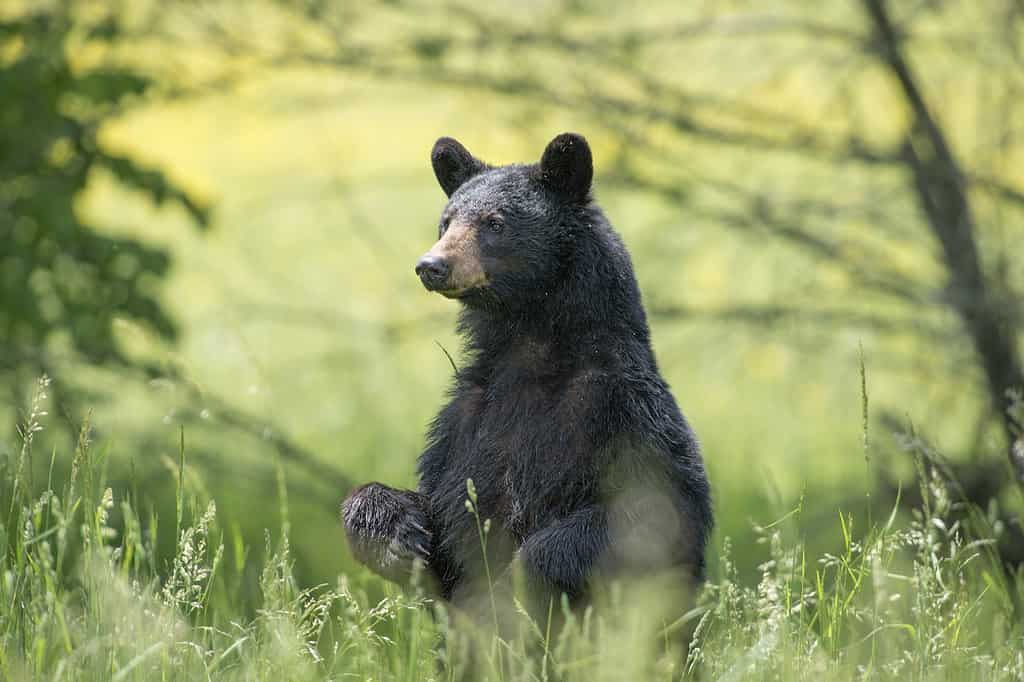
There are an estimated 120,000 to 160,000 black bears in British Columbia.
©wirestock/iStock / Getty Images Plus via Getty Images
When you see a logo that says “Be Bear Aware,” you know there’s quite a bear population there! The Canadian government estimates between 120,000 to 160,000 black bears (Ursus americanus) inhabit British Columbia. In just one area alone, Vancouver Island, there are over 10,000 of them.
While most have jet-black fur, some found along the St. Elias Mountains are tinged in blue. In other areas, black bears can sport coats that are white and cream-colored. Males can weigh up to 595 pounds (270 kilograms) and have a standing height of five to seven feet (152 to 213 centimeters). Females can weigh up to 308 pounds (140 kilograms).
Black bears are excellent climbers, and swimmers and can run at almost 30 miles per hour. Even with so many bears in the province, however, attacks on humans, such as one that occurred in 2022, are rare.
Despite that, authorities in the province have euthanized well over 5,000 bears since 2011 in the name of public safety. Since bears will return again and again to places that are good sources of food, things like unsecured trash are likely to attract them.
Grizzly Bear

There are an estimated 10,000 grizzly bears in British Columbia
©Michal_K/Shutterstock.com
The ultimate predators, grizzly bears (Ursus arctos horribilis) have no natural enemies — aside from humans. Practically driven to extinction in the lower 48, it is estimated there are still as many as 10,000 in British Columbia — but the number is dwindling there as well.
A grizzly’s weight varies widely depending on the time of year. In the spring that can go down to 480 pounds (220 kilograms) for males and 290 pounds (130 kilograms) for females. In the fall when they are fattening up for hibernation, they can weigh up to 40 percent more. Standing on their hind legs these bears can be up to nine feet (274 centimeters) tall.
One of the most important cycles in the life of a grizzly is hibernation. Surviving strictly off stored fat, they hibernate longer in interior B.C., from October to May. In coastal areas, this long winter’s “nap” lasts from November to mid-April. During hibernation, a grizzly’s body temperature and heart rate drops.
But the most critical event that occurs during this time is the birth of the cubs. Eggs fertilized during the summer don’t implant in a female’s uterus until hibernation. If all goes well, she will emerge from her den typically with a pair of cubs, who will stay with their mom for three, or even four years.
During the time frame from 2010 to 2021, there have been 104 grizzly bear attacks in the province. Such encounters can easily be fatal, such as the 2023 incident in which a couple and their dog were killed by a grizzly in neighboring Alberta.
Cougar
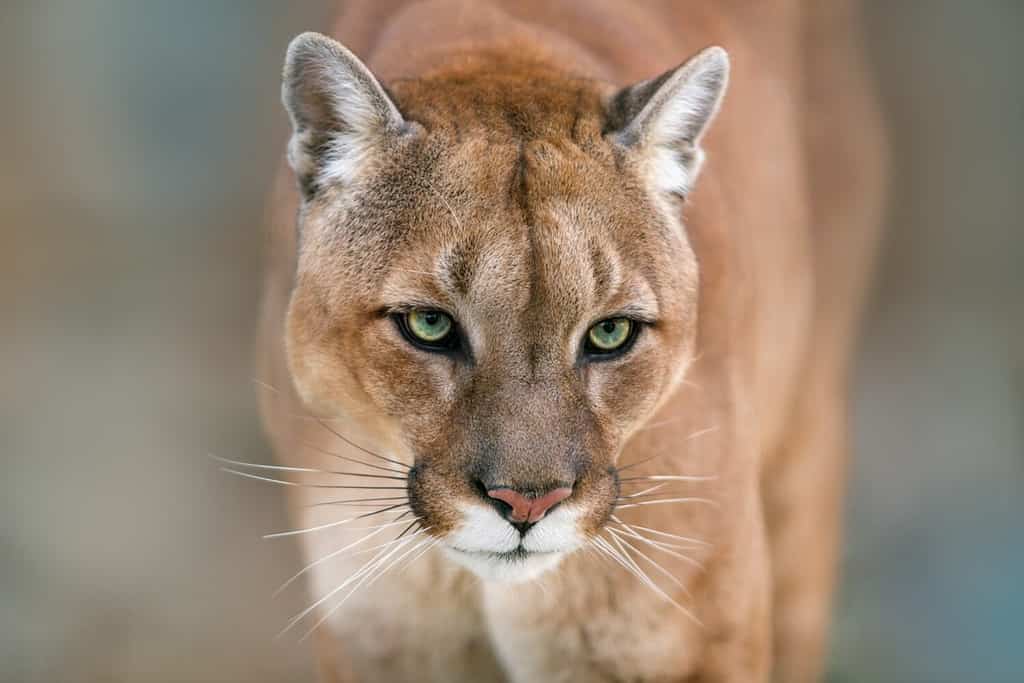
The cougar is the largest wild cat in Canada.
©Kwadrat/Shutterstock.com
A consummate killer that can take down a 500-pound moose, the cougar (Puma concolor) is the largest wild cat in Canada. A typical adult male weighs around 125 pounds (56 kilograms), with females weighing around 100 pounds (45 kilograms). The province is now home to an estimated 3,500 cougars, who are characterized by their super long tails, short fur, and cat-like tread.
Despite these animals’ supreme hunting abilities, it appears that humans are not typically on their menu. Attacks on people are rare and these clandestine cats usually make a point of avoiding them. But not always.
During the last century, five fatal encounters with cougars and 29 other documented attacks have been reported in British Columbia. Most have happened on Vancouver Island. In one of the most recent incidents in 2021, a resident of the province was severely mauled by a cougar outside his home.
Also known as mountain lions and panthers. Cougars primarily consume deer, as well as rabbits, beavers, and raccoons.
Wolf
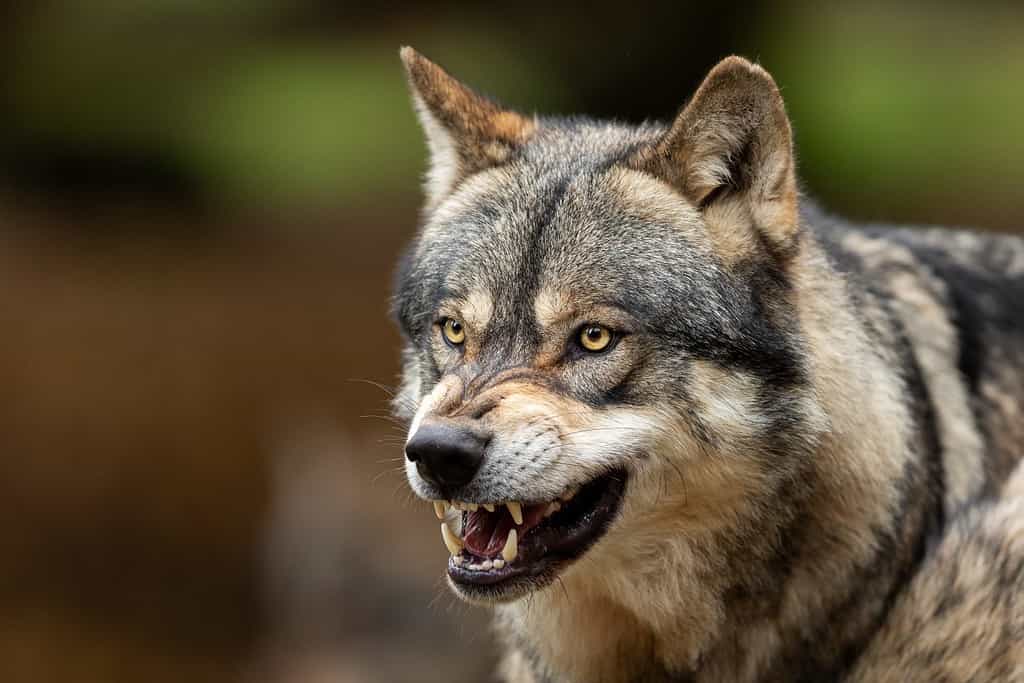
In what many believe to be a misguided attempt to save
caribou
, Canadian officials have been culling wolves in British Columbia since 2015.
©AB Photographie/Shutterstock.com
Don’t let that familiar canine appearance fool you! The grey wolf (Canis lupus) is truly a wild animal. With approximately 8,500 wolves in the province, it appears their population is holding steady. However Canadian officials kill hundreds of wolves a year in what many consider an ill-conceived attempt to save the endangered caribou. In 2022 British Columbia’s wolf culling program was extended for another five years. Since it began in 2015 over 1,709 wolves have been killed.
Vancouver Island is home to a genetically unique subspecies of the grey wolf (Canis lupus crassodon). Considered an endangered species, its range is limited to the island.
Unprovoked attacks by wolves are uncommon. In 2000 a camper was awakened by a wolf dragging him into the woods while in his sleeping bag. In 2007 a kayaker was attacked while setting up his campsite. And in 2020 a man in northwestern B.C. suffered serious injuries when he was attacked in his front yard by a lone wolf. The animal was later trapped and shot.
The largest of wild canines, the grey wolf weighs up to 130 pounds (60 kilograms). Its coat can range from grey to black to practically white.
Despite seldom attacking humans, wolves can be unpredictable and quite capable of inflicting fatal injuries if provoked.
Bison
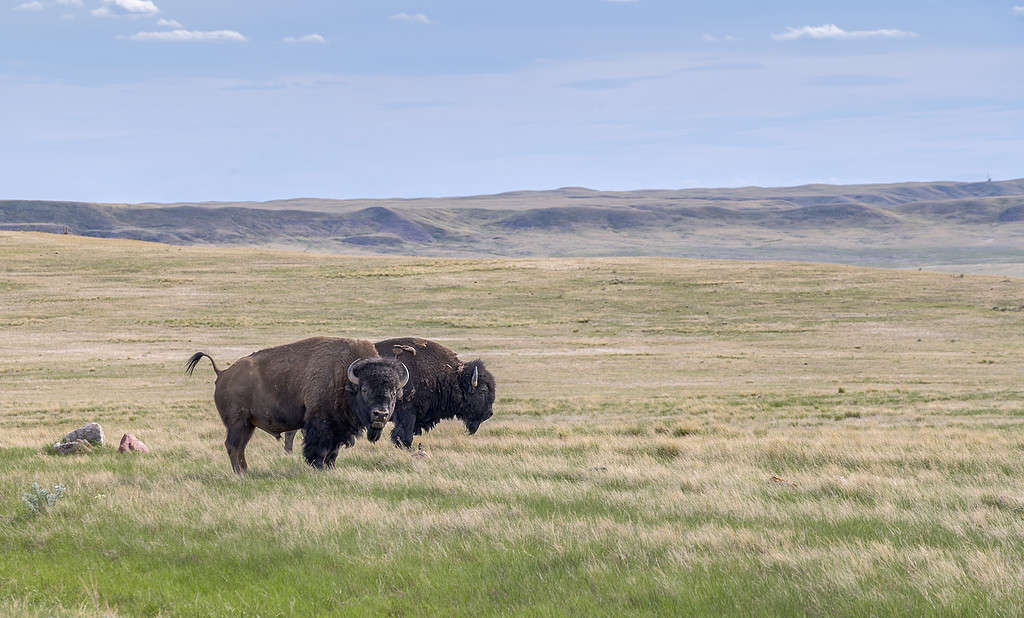
While mostly kept on ranches and raised for food, there are still two subspecies of wild bison that roam British Columbia.
©James_Gabbert/iStock via Getty Images
Although bison are mostly kept on ranches in British Columbia, there is still a population of two subspecies of wild bison in the province. They are wood bison (Bison bison athabascae) and plains bison (Bison bison bison).
Hunted to practically extinction, their numbers have rebounded since the 1900s. Currently, it is estimated that there are about 1,500 plains bison and several small herds of wood bison in British Columbia.
Bison are large animals, ranging in weight from 1,800 to 2,400 pounds (816 to 1,088 kilograms). And they can move, running at top speeds of 35 miles per hour. They are good jumpers and excellent swimmers. All of these features make human encounters with them extremely risky. Most have occurred in Yellowstone National Park in Wyoming. There, bison have been known to charge, butt, and toss tourists who don’t maintain a respectful distance.
Bison are often incorrectly referred to as buffalo.
Wild Boar

Experts in the U.S. are worried about a wild Canadian ‘super pig,’ that’s bigger, stronger and more aggressive.
©WildMedia/Shutterstock.com
Boars, also called wild pigs or feral hogs, are descendants of domesticated pigs. It doesn’t take long for farmed swine to revert to wild boar status while fending for themselves in the wild. In just a few generations on their own, their coats change color, their tusks grow long and they become more aggressive.
There are no official counts of how many wild boars there are in British Columbia, but upwards of 62,000 have been sighted in Canada. And there soon may be more. Record-breaking wildfires during 2023 allowed scores of domesticated pigs to escape into the wild.
Wild boars typically attack by charging. Their long, sharp tusks can inflict serious and sometimes fatal injuries. The current concern among experts is that these Canadian “super pigs” are evolving to be bigger, stronger, and have better survival skills.
Wild boars can weigh over 220 pounds (75 kilograms) and are considered an invasive species in both Canada and the U.S.
Sea Lion

Steller sea
lion
males can weigh up to 2,500 pounds.
©Delpixart/iStock via Getty Images
While they might appear benign, sea lions are best observed from a good distance! The jaws of these marine mammals are extremely strong, and they are known to carry a unique and dangerous bacteria in their mouths.
In British Columbia, there have been several reports of seemingly unprovoked sea lion attacks on people. One involved a young girl who was grabbed and dragged underwater by a sea lion while sitting on a dock. (Her grandfather pulled her out of the water).
Another confrontation was with a kayaker who passed by a wharf with a large number of resting sea lions. One by one they jumped into the water and gave chase to the frightened boater.
You can find two kinds of sea lions in the province, the Steller (Eumetopias jubatus) and the California sea lion (Zalophus californianus). Steller males can weigh up to 2,500 pounds (1133 kilograms), with females weighing up to 800 pounds (363 kilograms). California sea lions are smaller, at around 800 pounds (363 kilograms) for males and 240 pounds (109 kilograms) for females.
Rattlesnake
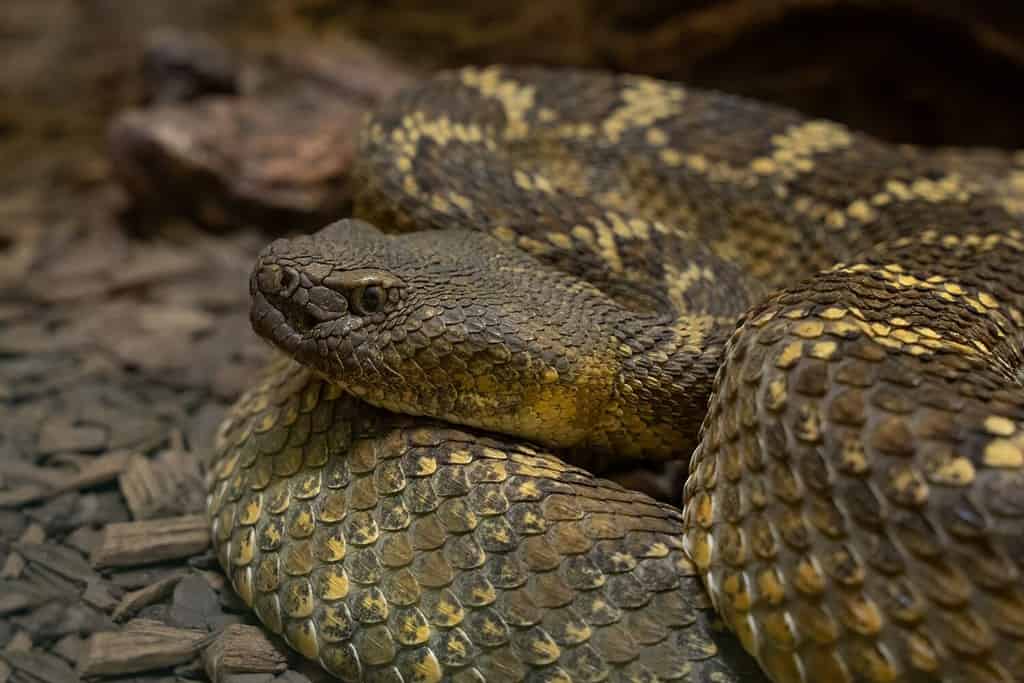
It’s against the law in British Columbia to trap, harm, or kill a
rattlesnake
.
©J.A. Dunbar/Shutterstock.com
British Columbia has just one kind of rattler, the northern pacific rattlesnake (Crotalus oreganus oreganus). The bite of this venomous snake can be fatal if antivenom isn’t administered in a timely way.
It’s estimated that there are 17,375 adult and juvenile rattlers in B.C. Despite what might seem like a large number of these snakes, they are protected by the B.C. Wildlife Act. That means it’s against the law to trap, harm, or kill one.
On average just a handful of humans are bitten by rattlers in the province each year. Most of those occurrences happen when people attempt to handle the snakes. Rattlesnakes are typically not aggressive and would much prefer to stay away from us. That said, they will strike if threatened or provoked.
Black Widow Spider
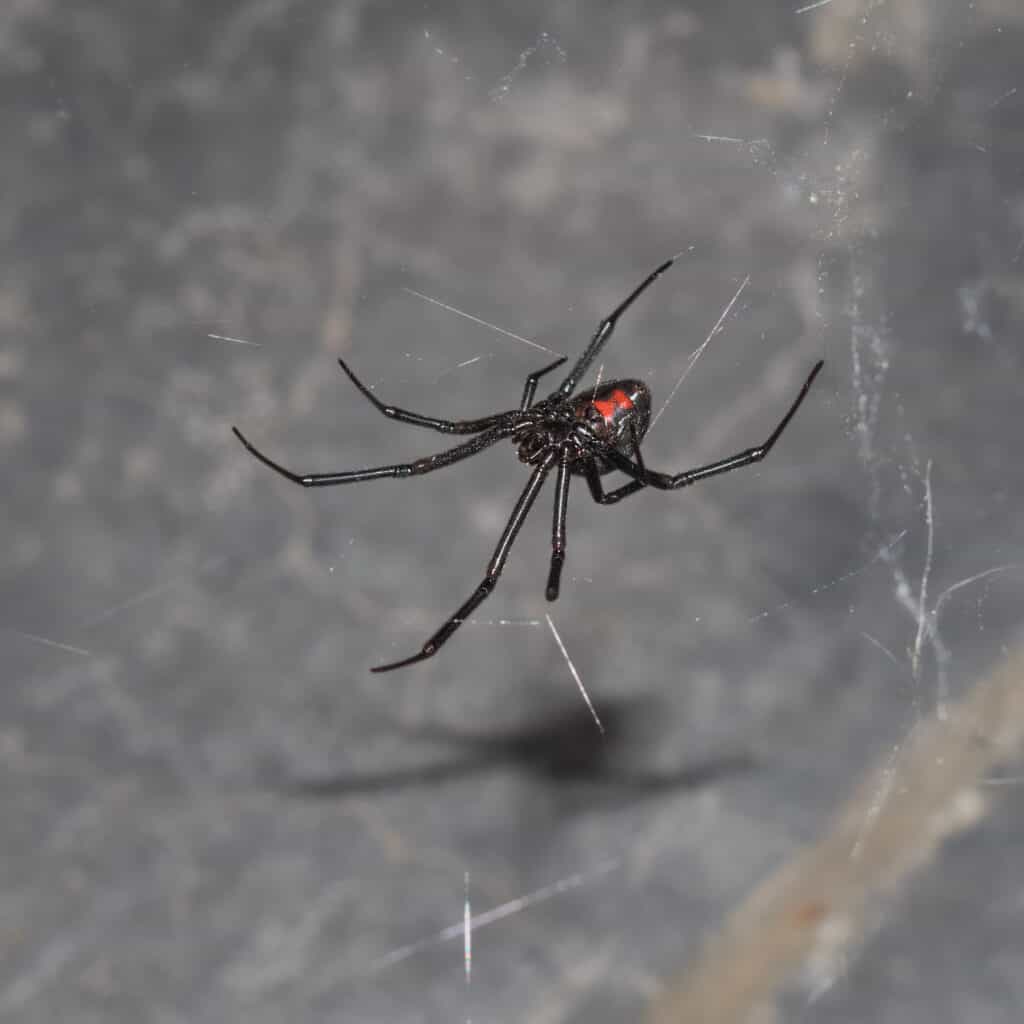
British Columbia is home to the western black widow, with a venom 15 times as powerful as a rattlesnake.
©iStock.com/Shravan Sundaram Photography
The western black widow (Latrodectus Hesperus) is one venomous spider found in British Columbia. mostly in the southern part of the province.
The venom of the black widow is quite strong — 15 times as powerful as a rattlesnake. The saving grace here is that it injects such a small amount of venom that it’s diluted quite quickly by the body. That doesn’t mean a bite won’t cause a reaction in a person. The bite of a black widow is extremely painful and in some cases triggers muscle contractions.
Male and juvenile black widows generally don’t bite. But females are another story. If hungry enough, they will kill and eat their partner after mating.
The photo featured at the top of this post is © John Morrison/iStock / Getty Images Plus via Getty Images
Thank you for reading! Have some feedback for us? Contact the AZ Animals editorial team.






